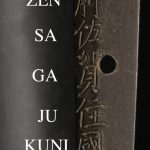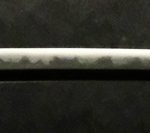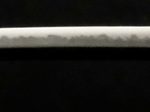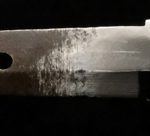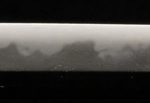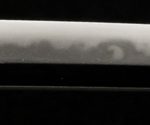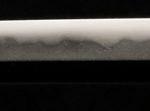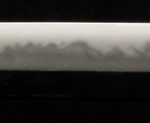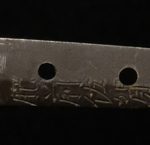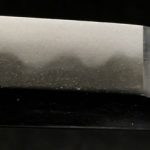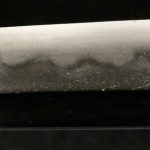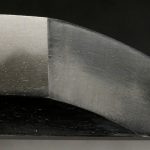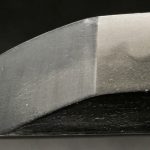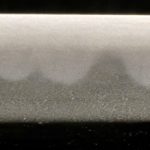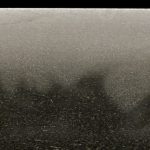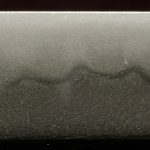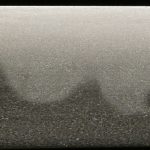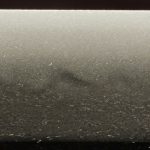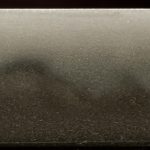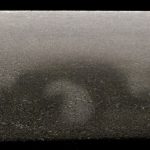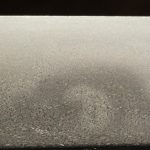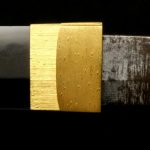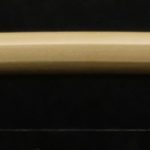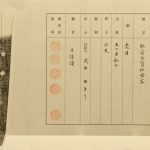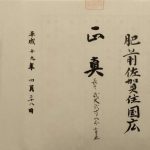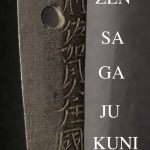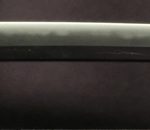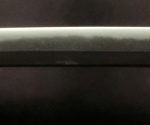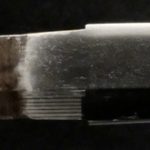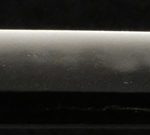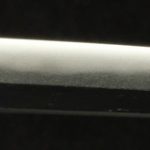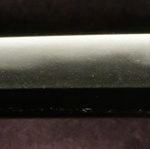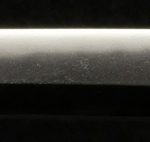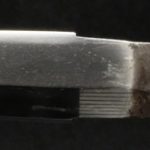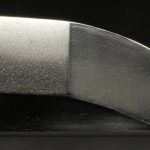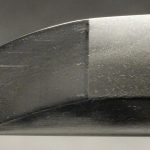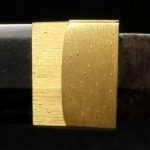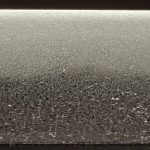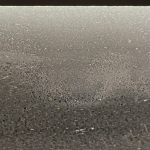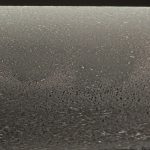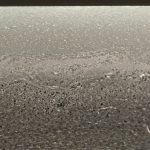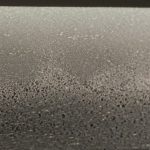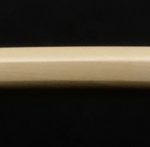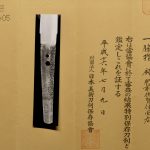KUNIHIRO / HIZEN / DAISHO / NTHK-NBTHK
KUNIHIRO HIZEN DAISHO
DAITO (KATANA)
NTHK KANTEISHO
FUJISHIRO’S QUALITY RATING: CHU-JO SAKU
SHARPNESS RATING: SAIJO WAZAMONO
SUGATA: SHINOGI ZUKURI
MEI: HIZEN SAGA JU KUNIHIRO
DATE: NONE c. 1644
NAGASA: 68.898cm (27.125″)
OVERALL: 88.58cm (34.875″)
MIHABA: 2.86cm (1.125″)
KASANE: 0.63cm (0.25″)
SORI: 0.5”
NAKAGO: UBU
MEKUGI ANA: TWO
YASURIME: KIRI
MUNE: IORI
HADA: KONUKA with TOBIAKI.
HAMON: GUNOME MIDARE
BOSHI: O-KOMARU Ç HAKIKAKE
HORIMONO OMOTE: NONE
HORIMONO URA: NONE
HABAKI: 2 PC. GOLD FOIL MATCHING HABAKI by B. TSCHERNEGA
SHIRASAYA
KUNIHIRO HIZEN DAISHO
SHOTO (WAKIZASHI)
NBTHK TOKUBETSU HOZON
FUJISHIRO’S QUALITY RATING: CHU-JO SAKU
SHARPNESS RATING: SAIJO WAZAMONO
SUGATA: SHINOGI ZUKURI
MEI: HIZEN SAGA JU KUNIHIRO
DATE: NONE c. 1644
NAGASA: 58.1cm (22.875″)
OVERALL: 72.39cm (28.5″)
MIHABA: 2.86cm (1.125″)
KASANE: 0.63cm (0.25″)
SORI: 0.5”
NAKAGO: UBU
MEKUGI ANA: TWO
YASURIME: KIRI
MUNE: IORI
HADA: KONUKA
HAMON: GUNOME MIDARE
BOSHI: KOMARU
HORIMONO OMOTE: NONE
HORIMONO URA: NONEHABAKI: 2 PC. GOLD FOIL MATCHING HABAKI by B. TSCHERNEGA
SHIRASAYA
- Hizen Kunihiro was the half-brother and student of Shodai Hizen Tadayoshi.
Courtesy of Sesko’s, Swordsmiths A-Z
KUNIHIRO (国広), Shōhō (正保, 1644-1648), Hizen – “Hizen no Kuni-jū Kunihiro” (肥前国住国広), “Hizen no Kuni Saga-jū Kunihiro” (肥前国佐賀住国広), real name Hashimoto Rokurōzaemon (橋本六郎左衛門), oldest son of the 1st gen. Hirosada (広貞), his grandson, the second son of the 1st gen. Kanehiro (兼広), succeeded as 2nd gen. Hirosada (広貞), we know dated blades from the ́ei (寛永, 1624-1644) to the Manji era (万治, 1658-1661), he died according to tradition in the fourth year of Tenna (天和, 1684) at the age of 82, dense ko-itame, excellently tempered midareba with nie, such suguha, gunome-midare or notare, wazamono, chūjō-saku.
You may prefer to call this a “pair” of Kunihiro blades. There are differing opinions on this as with most things in this hobby. Many feel if the koshirae are not matching they are not a daisho, or if the swords were not made together as a “daisho” then they are not a “true” daisho.
Daisho literally means large and small or long and short. It does not specify they the swords were made together as a pair. Originally, even Daisho koshirae did not specify the koshirae are identically matched.
If you google the 47 Samurai’s swords and look at their daisho, only a few were made together. Others were made by two completely different sword smiths.
Not until the Edo period did daisho come to mean a pair in matching koshirae. So, the term “True Daisho” seems to have an ambiguous meaning.
All I know for certain is these are very nice swords.
Feel free to refer to them however you like once they are yours.
$10,500 plus S/H and any additional fees (PP, wire, etc)
